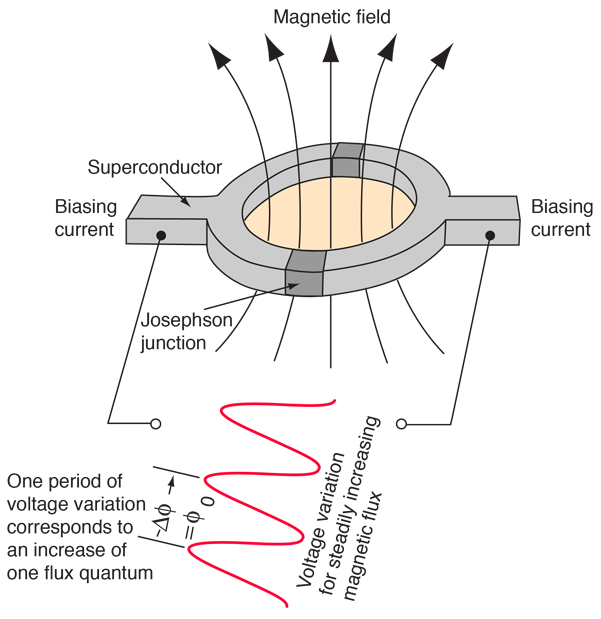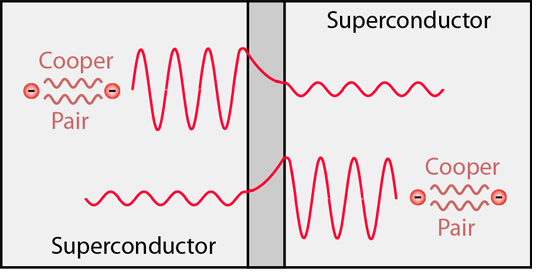SQUID Magnetometer
The superconducting quantum interference device (SQUID) consists of two superconductors separated by thin insulating layers to form two parallel Josephson junctions. The device may be configured as a magnetometer to detect incredibly small magnetic fields -- small enough to measure the magnetic fields in living organisms. Squids have been used to measure the magnetic fields in mouse brains to test whether there might be enough magnetism to attribute their navigational ability to an internal compass.
| Threshold for SQUID: | 10-14 T |
| Magnetic field of heart: | 10-10 T |
| Magnetic field of brain: | 10-13 T |
The great sensitivity of the SQUID devices is associated with measuring changes in magnetic field associated with one flux quantum. One of the discoveries associated with Josephson junctions was that flux is quantized in units

If a constant biasing current is maintained in the SQUID device, the measured voltage oscillates with the changes in phase at the two junctions, which depends upon the change in the magnetic flux. Counting the oscillations allows you to evaluate the flux change which has occurred.

| Discussion of SQUID sensitivity |
|
|
Superconductivity concepts
References
Rohlf,
Ch 15
Clarke
| HyperPhysics***** Condensed Matter | R Nave |


